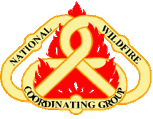The USFS Northern Region deployed a Safety Assistance Team to the Sunrise ICP to look into the allegations made in this SAFENET. Thru interviews and discussions the following findings were made to respond to the allegations of the Safenet
A paramedic was assigned to the incident, they were located with a vehicle and equipment at the helibase which was a central location to allow for rapid deployment.
• A local ambulance was available thru the 911 system. There was not one dedicated to the incident and there were none available thru the contracting system.
• Because the Alaska paramedics were not licensed to practice in Montana they did not have access to drugs or advanced ALS, however they were authorized to function at an EMTB level and their diagnostic skills and ALS knowledge could still be used to stabilize patients until incident paramedics arrive. Medical reciprocity is a State law and not one IMTs can readily influence
• The US Forest Service Northern Region has been in the process the last 18 months to develop a standardized Incident Medical Service (IMS) program. This program has medical direction and oversight from a physician. The IMS coordinator maintains lists of trained and qualified EMTs, line EMTs and paramedics available for wildland fire assignments and works closely with Medical unit leaders to fill these positions.
• The DIVS referred to was never assigned to the Burdette fire (which was being managed as a Division of the Sunrise fire), the IMT made the decision to leave the Team DIVS in place one more shift while they waiting for another Team DIVS to arrive, in order to avoid multiple transitions. The DIVS referred to in the Safenet did request 4 paramedics for the fire, but the team was not able to fill the order at the time. There was a line EMTB assigned to the fire.
• The IWI which occurred was a heat related injury – the Paramedic assigned to the fire was flown by the dedicated medivac ship to the Burdette fire and was at the helispot and waiting when the patient (under the care of the crew EMT) was brought down the line. An IV was started and the patient was packaged in the ship. The Medivac ship then rendezvoused with a Life Flight helicopter within 55 mins and arrived at the Hospital approx. 20 mins later. The patient was treated and released that day.
The IMT and the Northern Region take firefighter safety seriously, at the time of this report there were 12 line EMTs assigned to the fire, some with advanced endorsements from Montana State as well as medics from the Alaska Fire Medic Program and a Paramedic licensed in Montana. The Medical Unit Leader as well as their Trainee are both EMTs with the most advanced endorsement available in the State of Montana. Working in an environment such as rural Montana is much different than working in an urban area or in an environment where access to municipal departments and their paramedic firefighters and ambulances is common place. While IMTs strive to have a paramedic on every division, in times of high activity resource availability becomes a challenge. Responders from other Agencies and States should recognize there are different laws and statues in each state and that Regions have different protocols and systems in place to provide medical care to incidents– actions to circumvent these systems; even when well intended do nothing to help the ground firefighter and may in fact, hinder the process. The actions the writer demanded of the IC and MEDL were outside the ability of the IMT to implement.
The allegations made in this SAFENET were found to be unsubstantiated and instead to be more of a philosophical difference in what level of care should be provided. |



